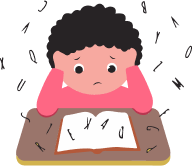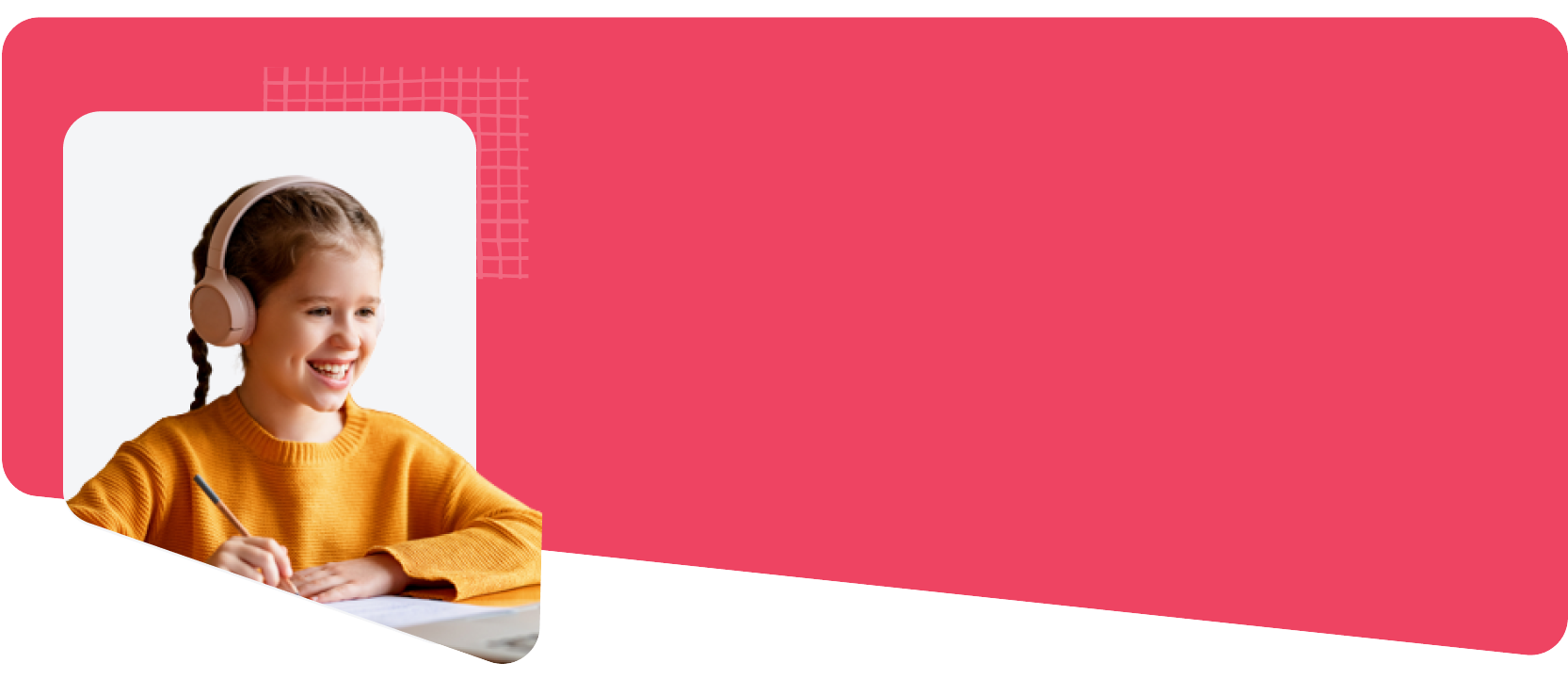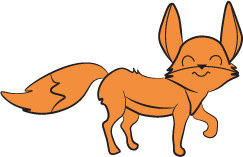Teaching a child to write their first letters can feel both exciting and overwhelming. Some days, they grip the pencil with confidence, and on other days, even a single letter feels like a struggle. That’s exactly why finding fun ways to teach writing letters matters; it turns practice from a battle into an activity children look forward to.
Children learn best when writing feels like play. With the right combination of creativity, sensory activities, and structured practice, letter formation becomes a joyful milestone rather than a frustrating task. In this blog, we’ll share fun ways to teach writing letters. Along the way, you’ll find creative twists that keep your child curious and excited.
Key Takeaways
-
Early letter formation strengthens fine motor skills and supports overall literacy development.
-
Multi-sensory activities make learning letters enjoyable and help children remember correct formations.
-
Short, consistent practice sessions build confidence and prevent frustration in young learners.
-
Creative exercises develop imagination while reinforcing neat and accurate writing skills.
-
Combining home practice with structured guidance speeds up skill mastery and keeps children motivated.
Why is Letter Formation Important?

Teaching correct letter formation from the start sets your child up for academic success in ways that extend far beyond neat handwriting. When children master proper letter formation early, they develop neural pathways that support reading, writing, and overall literacy development.
Strong letter formation skills create multiple benefits for your child:
-
Improved handwriting speed and legibility throughout their school years.
-
Reduced letter reversals and confusion between similar letters.
-
Better fine motor control that supports all writing tasks.
-
Increased confidence when tackling writing assignments.
-
Enhanced visual-motor coordination that transfers to other skills.
Research indicates that handwriting instructions have a direct impact on reading and writing progress. Children who form letters automatically free up working memory. That focus shift allows them to think about spelling, grammar, and creative expression instead of letter construction.
However, understanding why letter formation matters is only the first step. Now let’s explore how to teach it the right way.
How to Teach Kindergartners to Write Letters Properly?
Teaching letter formation systematically gives your child a solid foundation that prevents bad habits and builds confidence. Rather than jumping straight into alphabet order, follow this developmental approach that matches how children naturally learn motor skills.
Start with these essential steps:
-
Begin with pre-writing lines and shapes before introducing actual letters.
-
Teach uppercase letters first since they're developmentally easier to master.
-
Group letters by similar strokes rather than alphabetical order.
-
Practice letter families together to reinforce movement patterns.
-
Use verbal cues and action words to help your child remember formations.
-
Progress from large movements to smaller, more precise writing.
-
Introduce lowercase letters only after uppercase mastery.
-
Practice on various surfaces before moving to paper.
Start by helping your child master writing strokes, such as vertical, horizontal, circular, and diagonal strokes. These pre-writing skills form the building blocks for every letter. Once your child can draw these basic shapes confidently, introduce letter families like L, I, and T (with vertical and horizontal strokes) before moving on to circular letters like O, C, and Q.
Use action words that make letter formation memorable. Say "start at the top, zip down" for vertical lines or "round and around" for circular movements. This verbal guidance helps your child internalize the correct movement patterns while making the process engaging and fun.
Also Read: Best Creative Writing Tools for Kids in 2025
A structured approach sets the foundation, but children also need practice that feels playful and engaging. That’s where fun writing skills activities shine.
Fun Ways to Teach Writing Letters Through Activities

Letter formation improves when practice feels playful. Activities that engage the senses and creativity help children learn naturally. We’ve grouped these activities by type, making it easy to choose the one that suits your child best.
Each activity blends skill-building with play, turning practice into something your child enjoys and remembers.
Sensory-Based Activities
Sensory activities tap into your child's natural love of texture and movement while building letter formation skills. These multi-sensory approaches help children remember letter shapes through touch, sight, and movement.
Playdough Letters
Rolling and shaping playdough strengthens hand muscles while teaching letter formation. Your child gets immediate feedback from the tactile experience of molding each letter shape.
How to do it:
-
Give your child playdough and demonstrate how to form letters by rolling snakes and curves.
-
Start with simple letters like C, O, and L.
-
Guide your child to roll the dough into long snakes, then help them shape the snakes into letters.
-
Let them squish and reshape letters multiple times to practice the movements.
-
Encourage them to say the name of the letter while forming it.
Sand Tray Writing
Writing in sand provides gentle resistance that helps children feel the movements of the letters while practicing formations. The sensory input makes letter shapes more memorable.
How to do it:
-
Fill a shallow tray with sand, salt, or rice.
-
Show your child how to use their finger to trace letters in the sand.
-
Start with large movements and gradually make letters smaller.
-
Let them erase by smoothing the sand and try again immediately.
-
Hide small toys in the sand that start with the letter you're practicing.
Shaving Cream Letters
This messy, delightful activity combines sensory play with letter practice. The smooth texture and fun factor keep children engaged while building motor skills.
How to do it:
-
Spray shaving cream on a table or tray.
-
Let your child spread it around with their hands first.
-
Guide them to use their finger to write letters in the cream.
-
Add food coloring for extra excitement.
-
Clean your hands thoroughly afterwards and consider doing this activity outdoors.
Squishy Bags
These reusable writing tools provide controlled sensory input without the mess. Children can practice letters repeatedly while getting tactile feedback.
How to do it:
-
Fill a Ziplock bag with hair gel, finger paint, or pudding.
-
Seal tightly with tape around the edges for safety.
-
Tape the bag to a table or window.
-
Show your child how to press and trace letters on the surface of the bag.
-
Watch as the contents move and resettle, allowing endless practice.
Alphabet Ice Painting
Frozen letters add an exciting temperature element to letter formation practice. Children love the novelty while developing proper letter movements.
How to do it:
-
Freeze water mixed with food coloring in ice cube trays.
-
Add popsicle sticks as handles before freezing.
-
Let your child use the colored ice to paint letters on paper or concrete outside.
-
Watch the melting ice create beautiful letter trails.
-
Practice multiple letters before the ice melts completely.
Tracing and Tactile Activities

Tracing activities help children learn proper letter formation patterns through guided practice. These activities provide clear pathways while building muscle memory for correct letter movements.
Dry Erase Markers
Wipeable surfaces give children permission to make mistakes and try again immediately. The smooth marker movement helps develop proper letter formation flow.
How to do it:
-
Use a whiteboard or laminated letter cards with dotted outlines of the letters.
-
Give your child a dry-erase marker and demonstrate proper letter formation.
-
Let them trace over the dots, then try writing the letter independently.
-
Erase and repeat as needed without wasting paper.
-
Celebrate their improvements with each attempt.
Laminated Letters
Durable tracing cards provide repeated practice opportunities while maintaining clear letter models. Children can trace the same letter multiple times without wearing out the materials.
How to do it:
-
Print large letter formation sheets and laminate them for durability.
-
Provide washable markers or dry-erase markers.
-
Show your child how to start at the correct point and follow the arrows.
-
Practice each letter several times before moving to the next one.
-
Keep a collection of completed letters to show progress.
Tracing Cards
Textured tracing cards offer tactile feedback, helping children remember letter formations through touch. The raised surfaces guide proper movement patterns.
How to do it:
-
Create textured letters using sandpaper, felt, or foam cut into letter shapes.
-
Glue these onto cardboard for durability.
-
Have your child trace the textured letters with their finger.
-
Say the letter name and sound while tracing.
-
Follow up by writing the letter on paper.
Bumpy Paper Writing
Writing on textured surfaces provides sensory feedback that makes letter formation more memorable and engaging. The resistance helps children develop proper pressure and control.
How to do it:
-
Place paper over textured surfaces, such as window screens or corrugated cardboard, to prevent scratches.
-
Give your child a crayon or pencil to write letters.
-
Watch as the bumpy texture creates raised letters that they can see and feel.
-
Try different textures to find what your child prefers.
-
Practice the same letter multiple times on different textures.
Tactile Alphabet Cards
These multi-sensory cards combine visual, tactile, and kinesthetic learning for comprehensive letter practice. Children learn through multiple senses simultaneously.
How to do it:
-
Create or purchase alphabet cards with different textures for each letter.
-
Have your child trace the textured letter while saying its name and sound.
-
Practice forming the letter in the air after tracing.
-
Write the letter on paper to complete the sequence.
-
Use cards daily for quick review sessions.
Creative and Craft Activities
Craft activities transform letter formation into artistic expression while building fine motor skills. These creative approaches keep children engaged while practicing essential letter movements.
Pipe Cleaner Letters
Bending and shaping pipe cleaners develops finger strength while teaching letter formation. Children love the flexibility and immediate results that this medium offers.
How to do it:
-
Provide colorful pipe cleaners and demonstrate how to bend them into letter shapes.
-
Start with simple letters like C, L, and O.
-
Help your child twist and bend the pipe cleaners into letters.
-
Display finished letters on a board or use them to spell simple words.
-
Create letter sculptures that your child can keep and admire.
Alphabet Books
Creating personal alphabet books combines letter formation practice with storytelling and illustration, allowing children to develop their literacy skills while having fun. This project-based approach gives purpose to letter practice.
How to do it:
-
Help your child create a book with one letter per page.
-
Have them write the letter multiple times in different colors.
-
Draw pictures of objects that start with that letter.
-
Dictate stories about their drawings for you to write down.
-
Bind the pages together to create a special keepsake.
Alphabet Playdough and Tracing Mats
These reusable mats combine playdough manipulation with guided tracing for comprehensive letter practice. Children can practice the same letters repeatedly without wasting time.
How to do it:
-
Print or purchase alphabet mats with letter outlines.
-
Give your child playdough to roll into snakes.
-
Show them how to form letters on the mat, following the outline.
-
After playdough practice, have them trace with their finger.
-
Finish by writing the letter with a dry-erase marker.
Watercolors
Painting letters combines artistic expression with letter formation practice. The flowing movements of watercolor help children develop smooth letter transitions.
How to do it:
-
Set up watercolor paints and large paper.
-
Show your child how to paint letters using proper formation patterns.
-
Start with thick brushes for large letters, then progress to smaller brushes.
-
Let them experiment with color mixing while practicing letter shapes.
-
Create colorful alphabet posters to hang in their room.
Dot Markers
These chunky markers build hand strength while creating satisfying letter formations. Children love the bold colors and immediate visual impact.
How to do it:
-
Provide dot marker alphabet worksheets or create simple letter outlines.
-
Show your child how to follow the letter path using dot markers.
-
Watch as the dots connect to form letters while building movement patterns.
-
Let them fill in letters completely for added sensory satisfaction.
-
Create dot art masterpieces featuring their favorite letters.
Playful Learning Activities
Game-based learning turns letter formation into exciting challenges that children eagerly repeat. These activities add competition and social elements that motivate continued practice.
Letter Formation Games
Interactive games make letter practice feel like playtime while reinforcing correct formation patterns. Children learn through movement and challenge rather than repetition.
How to do it:
-
Create letter formation races where your child forms letters quickly and correctly.
-
Use letter dice to select which letters to practice randomly.
-
Set up obstacle courses where children form letters at different stations.
-
Time letter formation challenges and celebrate personal bests.
-
Play "letter detective" games where they find and form hidden letters.
Alphabet Bingo
This familiar game format adds letter formation practice to traditional bingo excitement. Children practice letters while developing recognition and formation skills simultaneously.
How to do it:
-
Create bingo cards with letter formation prompts instead of regular letters.
-
Call out letters and have your child form them using chosen materials.
-
Mark completed letters on their bingo card.
-
Celebrate when they complete a row by reviewing the practiced letters.
-
Create themed bingo cards featuring letters from their favorite stories.
Craft Sand Tray Activity
Sand provides natural resistance and immediate erasability that encourages experimentation. Children can practice letters fearlessly, knowing they can start over instantly.
How to do it:
-
Fill a large tray with colored sand or salt.
-
Hide small objects in the sand that start with specific letters.
-
Have your child find objects and then practice writing the corresponding letters.
-
Add tools like sticks or toy rakes for variety.
-
Create letter treasure hunts in the sand tray.
Activities create excitement, but success depends on consistent support. A few smart strategies can make practice smoother for everyone.
Also Read: How to Help Your Child Struggling with Writing Skills
Tips for Parents and Teachers to Make Letter Formation Easier

Teaching letter formation successfully requires understanding how children learn best and adapting your approach to support their development. These research-backed strategies help you guide your child toward writing success.
-
Practice little and often rather than long sessions. Ten minutes of daily practice beats one hour of weekly drilling. Children's attention spans and motor skills develop better with consistent, short practice sessions.
-
Start letters at the top and work downward. This fundamental rule prevents reversals and builds consistent movement patterns. Always demonstrate proper starting points and emphasize "top to bottom" movement.
-
Use multi-sensory approaches before moving to paper. Children need to feel letters in their muscles and memory before attempting pencil control. Combine touch, movement, and visual cues to create strong neural pathways.
-
Select the appropriate writing tools to support your child's development. Short pencils, broken crayons, or golf pencils promote better grip and control. Avoid regular-length pencils until your child develops adequate hand strength.
-
Create positive associations with writing practice. Celebrate small improvements and focus on effort rather than perfection. When children associate writing with fun and success, they are more likely to practice it willingly.
-
Watch for signs of fatigue or frustration. Stop practice sessions before your child becomes overly tired or overwhelmed. Tired or frustrated children form bad habits and develop negative attitudes toward writing.
-
Model proper letter formation consistently. Children learn by watching and copying. Always demonstrate correct starting points, direction, and movements when showing letters.
Even with the right guidance, some children may still require additional support. That’s where platforms like FunFox bring playful structure into lasting progress.
Also Read: After School Activities to Keep Kids Engaged
How can FunFox make Letter Formation Fun and Lasting for Your Child?

At home, letter formation often begins with sand trays, rainbow writing, or playdough. These fun activities spark interest, but many kindergartners need more guidance to turn practice into lasting skills. That’s where FunFox Writers Club comes in.
We bring the same playful energy into structured learning. Our teachers use interactive games, storytelling, and creative exercises so children never feel like writing is a chore. Every session blends phonics, handwriting, and self-expression in a way that feels natural and enjoyable.
Here’s how we support your child:
-
Small Batches: With limited students in every class, teachers can provide personal guidance and track individual progress.
-
Fun Meets Structure: Each 60-minute session combines interactive games, targeted exercises, and skill-building activities that make practice stick.
-
Creative Teaching Methods: From guided drawing to story prompts, lessons encourage imagination while reinforcing neat and confident writing.
-
Kindergarten-Friendly Approach: We meet children where they are, providing patient support and celebrating small wins that help maintain high motivation.
-
Beyond Letters: Once letters are mastered, we help children form words, build sentences, and take their first steps into early storytelling.
At FunFox, the joy of playful practice and the power of professional teaching come together. Children don’t just form letters; they grow into confident young writers.
Conclusion
Finding fun ways to teach children writing letters helps them enjoy learning while building strong early writing skills. When practice feels playful, children engage deeply and develop confidence, rather than resisting handwriting. The small wins, like forming curves or spacing letters, become stepping stones toward lasting writing success.
For families seeking extra guidance, FunFox Writers Club offers small batches and expert teachers who nurture kindergarten learners. Our sessions combine structure with creativity, turning practice into progress and helping children thrive in school writing.
Support your child’s journey today. Schedule a free trial class with FunFox and watch your child grow into confident young writers.
FAQ’s
1. How to support children with letter formation?
Provide consistent practice using guided tracing, tactile activities, and visual cues to reinforce learning. Encourage proper pencil grip, posture, and gradual independence. Give timely feedback to reinforce correct shapes and strokes.
2. What is a multi-sensory approach to letter formation?
A multi-sensory approach engages visual, auditory, and kinesthetic senses simultaneously. Children see, say, and trace letters using hands-on tools, which helps improve their memory, recognition, and retention of letter shapes.
3. What strategies can teachers use to facilitate the learning of letter formation and pattern writing?
Teachers can model strokes, use repetition with patterns, integrate tactile activities, provide structured guidance, and gradually reduce the level of support. Visual prompts and immediate feedback help reinforce correct formation consistently.
4. How to start a letter interestingly?
Begin with large, colorful demonstrations of letters using interactive materials. Incorporate fun textures, songs, or movement to capture attention and spark curiosity before independent writing begins.
5. What order to teach letter formation in?
Teach letters based on stroke similarity and frequency of use. Begin with straight lines and simple shapes, then move on to curves, and gradually progress to more complex combinations for more effortless mastery.















